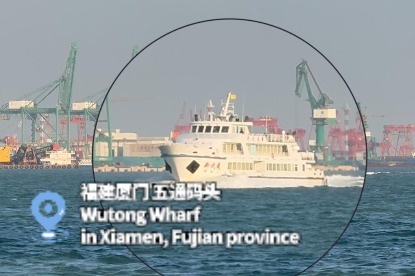14th Five-Year Plan outlines stronger online copyright protection
By YANG YANG | China Daily | Updated: 2022-01-12 09:09

The National Copyright Administration of China recently published the 14th Five-Year Plan for Copyright Protection, outlining 26 key tasks in six areas: the copyright law system; the administrative protection system; the need to crack down on infringement and piracy; the social services framework; international cooperation and exchange; and the development of related sectors.
According to the plan, more than 5 million copyrights will have been registered by 2025, and the contribution of the copyright industry to GDP will have grown to 7.5 percent.
Network-related industries will become one of the major battlefields for copyright protection, and information technologies such as big data, AI and blockchain will have to be developed to enhance the protection of traditional culture and the knowledge industry.
Through the use of new technological and supervision methods, intractable problems can be dealt with more effectively, and the rapid response mechanism to online infringement and piracy can be improved.
Among network industries, one of the most affected is online literature.
A white paper on copyright protection for online literature in China released in April by Analysys, a digital consultancy, showed that the market size of China's core digital entertainment sectors stood at 683.5 billion yuan ($107.2 billion) in 2020.
Although online literature only accounted for 28.8 billion yuan, sectors lower down the chain, including anime, film, TV, video games, music and other derivatives, totaled 253.1 billion yuan in 2020, online literary works and their IP contributed more than 40 percent to China's overall digital entertainment market.
However, the booming online literature industry is threatened by infringement and piracy. Analysys's paper showed losses of over 6 billion yuan through piracy, up 6.9 percent compared with 2019, and underlying the rising importance of copyright protection.
The paper attributed the increased loss mainly to the development of new technologies, the increasingly complex means through which information is spread, and different forms of piracy along the entire industrial chain. By December 2020, cumulative active monthly users on major piracy platforms stood at 7.27 million. On average, active users spent 19 hours reading on the platforms each month.
At a forum on copyright protection for online literature at the 5th China Online Literature+ Conference in Beijing last October, Zhang Lianyong, deputy chief judge of the Beijing Internet Court, said that the infringement and piracy of online literature has changed in three respects: from copy-and-paste to providing all related links, including pirated links, on a Web page; from catering to computer users to mobile phone users; and from text to multimedia.
Compared with audio or video files or online games, the smaller file size of electronic literary works makes copying and pasting convenient, said Zhang Yuanzhou, general manager of the intellectual property department at digital literature company COL.
"Also, many pirated works are created by different individual writers, making it difficult for them to protect their rights," he said.
During a case heard at the Beijing Intellectual Property Court in 2020, one novel was found to have plagiarized more than 110,000 words from sixteen other books, including entire passages and phrases and 21 complete scenes.
Zhang added that the infringement industry has matured, with pirates setting up servers overseas, and using tools like Optical Character Recognition and crawlers to collect specific information from major online literature websites like those of COL, China Literature and iReader.
"They can build a piracy website within minutes," he said.
























